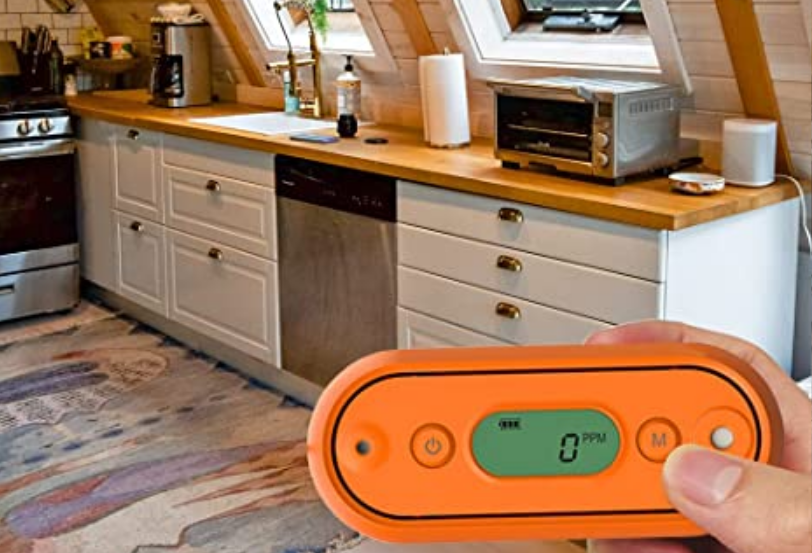Carbon monoxide (CO) is an odorless, colorless gas formed by the incomplete combustion of fuels. People who are exposed to CO gas will become unwell because the CO molecules will replace the oxygen in their bodies.
An issue with CO
Our senses are unable to identify CO since it lacks any odor, color, or flavor. This implies that toxic gas concentrations can accumulate indoors without humans being able to notice the issue until they become ill. Additionally, when people are ill, their symptoms resemble those of the flu, which might make them miss the early indications of CO poisoning.
According to the CDC, 400 people in the US pass away from unintentional CO exposure each year. According to data unique to Minnesota, inadvertent CO poisoning claims the lives of 14 persons on average each year. Every year, about 300 people seek treatment at emergency rooms for symptoms brought on by unintended CO exposure. Carbon Monoxide Data Portal can provide more details.
The good news is that carbon monoxide poisoning is easily avoidable by taking simple precautions like installing a CO alarm and keeping fuel-burning equipment in good working order.
Home Sources of Carbon Monoxide
Every time a substance burns, CO is created. Homes with linked garages or fuel-burning equipment are more prone to experience CO issues. Fuel-burning devices and appliances, including those found in our houses, are common sources of CO.:
- Clothes dryers
- Water heaters
- Furnaces or boilers
- Fireplaces, both gas and wood burning
- Gas stoves and ovens
- Motor vehicles
- Grills, generators, power tools, lawn equipment
- Wood stoves
- Tobacco smoke
CO Concentrations Typically Found Indoors
In a perfect world, CO levels indoors would match those outdoors. The average outdoor CO levels over an 8-hour period in the Minneapolis/St. Paul metro area normally range from 0.03 to 2.5 parts per million (ppm). These levels are much below the regulatory guideline for CO in outdoor air, which is 9 ppm. In general, metropolitan regions have higher concentrations and rural areas have lower concentrations. A source of CO may be within your home or relatively close by if CO concentrations indoors are higher than outdoors.
CO and leisure
People can be exposed to high levels of carbon monoxide in a variety of ways while taking part in activities including camping, fishing, hunting, and boating.
Never use equipment like camp stoves, charcoal grills, fuel-burning lanterns, or generators inside a tent, RV, or lodge.
Keep portable generators away from windows and doors that are open.
Users of heating equipment in ice fishing huts should have a functional CO alarm installed, and they should open a window for increased ventilation.
Ice homes and cabins’ heating systems need to undergo routine maintenance checks and be in good working order.
Boaters should be mindful of the boat’s exhaust area and should tow passengers away from it by at least 20 feet.
When parked next to other boats, be aware of their emissions.
Put a CO alarm in the boat’s stateroom.
Preventing CO Poisoning in Your Family
- Maintain and properly vent fuel-burning appliances
It’s crucial to be aware of the fuel-burning appliances in your home and to keep them well-maintained. All of these appliances ought to have an outdoor vent. An experienced heating professional should inspect your fuel-burning appliances (such as your furnace) once a year to check for potential issues. Knowing the warning indicators of a potential CO issue is also a good idea:
- streaks of soot near fuel-burning equipment or soot that has fallen into a fireplace
- Your chimney doesn’t have an upward draft.
- Condensation and excessive moisture on walls, windows, and other cold surfaces
- Rust on appliance jacks or flue pipes
- the flame in combustion appliances is orange or yellow (the flame should be blue)
- At the top of the chimney, there are cracked or stained bricks.
Never use equipment meant for outdoor usage indoors. Examples include gas-powered lawn equipment, portable generators, camp stoves, and barbecue grills. Do not heat your house using an oven. In addition to being a fire risk, it also poses a carbon monoxide risk. Your car must not be driven or left idling in an attached garage. Instead, immediately reverse your car out. Verify that the exhaust pipe of your car is not obstructed, say during the winter by snow.
- Recognize the signs of CO poisoning
Since the symptoms of CO poisoning are similar to those of the flu, diagnosis can be challenging. Because CO causes people to overlook early warning signs and eventually lose consciousness and be unable to flee to safety, it is frequently referred to as the “silent killer.”
The majority of persons experience mild headaches and shortness of breath with moderate exertion as their initial symptoms of exposure. Increased headache pain, lightheadedness, exhaustion, and nausea may result with continued exposure. Eventually, symptoms could intensify into loss of consciousness, agitation, disorientation, and impairment in judgment and coordination.
These signs can help you distinguish between the flu and CO poisoning:
- When you are not at home, you feel more positive.
- At the same time, everyone at home is ill (the flu virus usually spreads from person to person)
- The most impacted family members spend the most time at home.
- Indoor animals seem sick.
- You don’t have the flu-like symptoms, like a fever and body aches, or certain other illnesses, including swollen lymph nodes.
- When operating fuel-burning equipment, symptoms may manifest or seem to worsen.
- Add and keep your home’s CO alarms in working order.
According to Minnesota state law (MN Statute 299F.50), every residence must have at least one functional CO alarm located within 10 feet of each room that is allowed to be used for sleeping. The most recent Underwriters Laboratory (UL) Standards should be adhered to by all CO alarms. Please install your CO alarm according to the manufacturer’s instructions, and make note of the recommended replacement date.


Leave A Comment